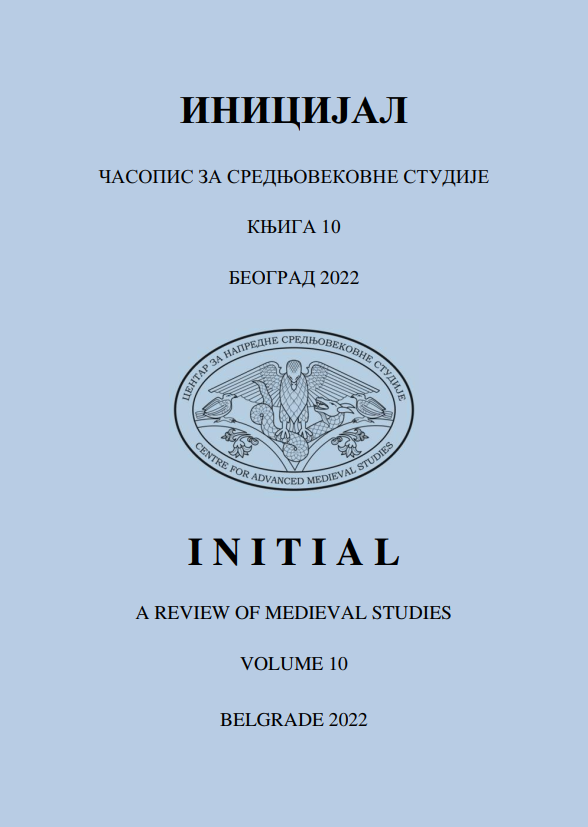ПРВИХ ДЕСЕТ ГОДИНА ИСТРАЖИВАЊА ХИЛАНДАРСКОГ МЕДИЦИНСКОГ КОДЕКСА (1952–1961)
THE FIRST TEN YEARS OF RESEARCH OF THE HILANDAR MEDICAL CODEX (1952–1961)
Author(s): Stanoje BojaninSubject(s): History, Cultural history, Middle Ages
Published by: Центар за напредне средњовековне студије
Keywords: Hilandar Medical Codex; medieval medicine and pharmacy; translated literature; Salerno medical school; Circa instans; Antidotarium Nicolai; Byzantium; Dioscorides; Anicia Juliana Codex
Summary/Abstract: The discovery of Hilandar manuscript №517 is particularly significant for the formation of our elementary knowledge about Serbian medieval medicine and pharmacy, as well as botany, zoology, metallurgy, etc. The first ten years of research on the Hilandar Medical Codex since its discovery in 1952 are described in this article. This research was crucial for further development of the history of medieval medicine in Serbia. The works presented were written by the authors from that period, first of all, Relja Katić, Lazar Stojanović and Mirko Grmek, doctors and historians of medicine who left important marks on the study of the history of medicine. However, studies from that period were not equal in importance, and most of them were misleading. At that time, the main issue was determination of the number of medical texts in Hilandar manuscript № 517, their origin, the language of original texts and the authorship. For most of the period, hypotheses on the Old Serbian translation of the ancient authors, primarily Galen’s writings and Dioscorides De materia medica, and the Byzantine mediation in transmission of the knowledge of the Hippocratic-Galenic medicine were dominant. At the end of the 1950s, it was established that the Hilandar texts were translations not from Greek but from Latin. In that regard, research of Mirko Grmek was important, and with its publishing in 1961 the first and fundamental stage of the work on the Hilandar medical codex was successfully completed. Grmek’s work proved that the texts revealed previously unknown influences of the Western medical schools of Salerno and Montpellier on Serbian medicine. Pharmacological works of the Salerno medical school, such as Circa instans and the Antidotarium Nicolai, were reliably identified in the Hilandar codex №517.
Journal: Иницијал. Часопис за средњовековне студије
- Issue Year: 2022
- Issue No: 10
- Page Range: 111-148
- Page Count: 38
- Language: Serbian

